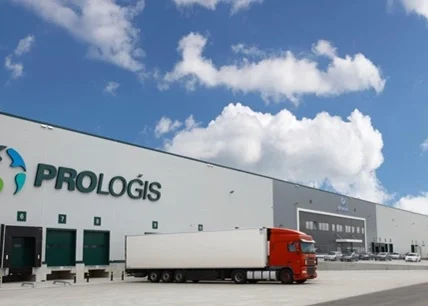Platinum is one of the most precious metals in the world. It plays a vital role in various industries. Platinum is prized for its strength, resistance to corrosion, and catalytic properties. From catalytic converters in cars to jewelry and electronics, platinum’s demand is high. An unfolding look into the world of platinum production for the year 2024 reveals that key countries play fundamental roles of influence in shaping the global market. Be it the rich mines of South Africa or strategic operations throughout Russia, this is a dynamic in variety and diversity of platinum production.
In this piece, we shall analyze the top 10 countries that produce the largest amount of platinum in the world for the year 2024 while giving consideration to their contribution and factors that underline their prominence.
Countries With Highest Platinum Production
1. South Africa – 130,000 kg of Platinum:
Global platinum output is led by South Africa at 130,000 kilograms. The Bushveld Igneous Complex in South Africa is a major platinum producer. Strong mining infrastructure and plentiful geology make South Africa the platinum extraction leader.
South Africa’s platinum domination depends on the mineral-rich Bushveld Igneous Complex. This geological structure features enormous platinum reserves obtained using advanced technologies. The world’s biggest platinum supplier is South Africa owing to its enormous mining network.
Mining in South Africa benefits from its geology and infrastructure. Platinum extraction expertise, advanced technology, and effective ways aid the country’s mining. Thus, South Africa dominates platinum production for the world’s expanding demand.
Also read: Top 10 Largest Producer Of Zinc In The World
2. Russia – 22,000 kg of Platinum:
With 22,000 kilograms, Russia ranks second in platinum output behind South Africa. Platinum is a lucrative byproduct of Russia’s nickel and copper mining. Platinum extraction strategically integrated into various mining activities makes Russia a worldwide platinum player.
Russia’s platinum market share comes from its vast nickel and copper reserves. Platinum profits from these mines’ complicated operations increase platinum supply. Mineral extraction synergy demonstrates Russia’s complete platinum supply plan.
Strategic extraction methods make Russian mining a prominent platinum market player. These tactics value efficiency, resource optimization, and sustainability above quantity. The country’s mining operations provide a steady platinum supply, boosting its worldwide importance.
Read also: Top 10 Largest Producer Of Tin In The World
3. Zimbabwe – 15,000 kg of Platinum:
Zimbabwe produces 15,000 kilograms of platinum, third worldwide. Platinum riches are found in Zimbabwe’s Great Dyke geological formation in the middle. Zimbabwe’s platinum sector fosters economic growth and participates in global supply networks.
Zimbabwe’s platinum wealth concentrates on the Great Dyke. Platinum resources are meticulously gathered from its mineral-rich embrace to provide the globe. Zimbabwe’s efficient exploitation of natural resources assures a steady platinum market contribution.
Zimbabwe’s economy depends on platinum. Platinum strengthens Zimbabwe’s economy, produces employment, and develops technology. Zimbabwe’s platinum reserves serve various industries, hence its participation in worldwide platinum supply chains illustrates its global influence.
4. Canada – 7,400 kg of Platinum:
Canada produces 7,400 kilograms of platinum, fourth worldwide. The Lac des Îles Mine in Ontario is Canada’s platinum center. Due to its efficiency and ethical mining, Canadian platinum output leads the globe.
Platinum mining in Canada is focused on Ontario’s Lac des Îles Mine. Canada’s strategic mining concentration in this region demonstrates its platinum resource efficiency. Canada supplies world platinum needs with focused extraction.
Canada’s platinum industry produces and extracts efficiently. Mines use modern technology and effective approaches to optimize platinum resource extraction. Operational effectiveness makes Canada a trusted and strong platinum market player.
5. The United States – 4,200 kg of Platinum:
America produces 4,200 kilograms of platinum, the fifth-most in the world. The Montana Stillwater Mining Company changed the U.S. platinum industry. The US satisfies its platinum demands via primary production and recycling.
Major platinum producer Stillwater Mining Company located in Montana. Strategic contributions influenced the nation’s platinum market. This platinum-rich mine meets industrial demands and boosts US platinum output.
America satisfies platinum demand via primary production and recycling. This two-pronged method demonstrates the nation’s resource optimization and environmental responsibility. Recycling improves global resource sustainability and primary output.
6. China – 2,500 kg of Platinum:
China produces 2,500 kilograms of platinum, sixth worldwide. Demand from several sectors is growing China’s platinum industry. China’s platinum reserves and mining activities show its rising importance in the platinum market.
Chinese platinum production is expanding due to industrial demand. Planning to meet this demand makes the country a platinum player. China’s worldwide significance develops as a platinum consumer and producer.
Platinum wealth drives China’s global rise. China strategically leverages its huge resources to meet local platinum demand and support the global supply chain. The country’s mining expansion indicates a proactive approach to capitalize on its platinum reserves, solidifying its top platinum producer position.
7. Finland – 764 kg of Platinum:
Finland produces 764 kg of platinum, sixth worldwide. Platinum, a profitable byproduct of nickel mining, provides the nation’s platinum. Finland’s ethical and sustainable mining practices meet international standards and save resources.
Finland’s little platinum production is noteworthy since it mines nickel. Nickel mining produces platinum, which boosts Finland’s platinum supply. Finland consistently contributes to the global platinum market due to its resource efficiency and dual-purpose approach.
Finland’s sustainable mining rules apply to platinum and nickel mining. As environmental awareness rises, Finland adopts international mining guidelines to decrease its environmental impact. This ethical approach makes Finland a platinum producer that promotes environmental sustainability.
8. Colombia – 832 kg of Platinum:
Colombia ranks eighth in platinum output with 832 kg. Platinum production and recycling are national goals. Effective mining and global demand are driving Colombia’s platinum market growth.
With primary production and recycling, Colombia’s platinum industry shines. The nation utilizes its platinum resources by meeting local demand and joining the global supply chain. Colombia responds to global market demands by diversifying platinum extraction technologies.
High platinum output in Colombia is influencing the global platinum market. Colombia’s effective mining makes it a worldwide player that meets industrial demands. Refining the platinum sector boosts economic development and the global platinum scene.
9. Australia – 100 kg of Platinum:
Australia produces 100 kilograms of platinum, eleventh worldwide. Australian platinum is vital to global demand despite being smaller than other supplies. US-Australian Stillwater Mining Company produces platinum in Australia.
Although smaller than other platinum producers, Australia’s industry is significant worldwide. Australia’s 100 kg highlights its platinum market relevance despite its tiny size. Australia is a reliable platinum source because to its mining and strategic activities.
Australian platinum comes from Stillwater Mining Company in the US and Australia. Global mining is interconnected with activity in many countries. Stillwater Mining Company increases Australia’s platinum market share.
10. Poland – 90 Kg of Platinum:
Poland rounds out the top 10 with 90 kg of platinum. Polish platinum production is tiny compared to other producers, but it is strongly related to copper mining, where platinum is a byproduct. The nation’s platinum market stresses its global supply chain relevance.
Polish platinum-copper mining shows mineral extraction synergy. Poland optimises resource utilization as platinum becomes a copper byproduct, adding to copper and platinum supply networks. This benefit emphasizes Poland’s resource extraction and mining industry dynamics.
Conclusion:
In travelling through the global platinum production landscape of 2024, one is bound to realign their thoughts in associating some nations in the two key points that shape this industry. From South Africa playing the dominant role to strategic contributions of Russia and Zimbabwe, the production of platinum by a nation says something about country’s geological wealth, its capability as well as ongoing commitment towards sustainable practices. The top 10 largest producers of platinum together are in a collective reach to be able to manipulate the global market, meet the demands of industries at large, and in doing so, make sure that platinum retains its status as a precious metal to vouch for.

Brandon is the cheif editor and writer at WorldUnfolds.com. With a passion for storytelling and a keen editorial eye, he crafts engaging content that captivates and enlightens readers worldwide.















